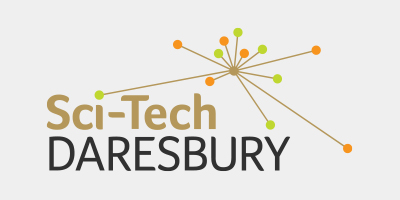January 22, 2019
Technology Trends of 2019
Remember personal jet packs? One flew at the 1984 Olympic Games. Perhaps by 2019, they will have advanced enough to be on sale at Argos? Actually, no. Jet packs don't seem practical – or safe - for a myriad of reasons, however, there will be ground-breaking technology on many fronts in 2019.

The interface between increasing automation, computers and intelligent devices will push forward this year. Already projections are that 30% of searches will be by voice by 2020, either through smartphones or devices like Alexa and Echo. Advertisers and retailers will have to recognise this and alter their algorithms to keep up with the trends.
On the Road
Electric Vehicles and driverless cars will continue to improve. EVs really only suffer from a perception of limited range, even though most journeys are reasonably short, especially in city driving, where their nippy acceleration, quietness and low costs come to the fore. Battery technology improvement is where manufacturers could be competing to create the "killer app". Although Lithium-ion is a proven system, it has possibly reached its developmental limit. Some companies are looking at aluminium and zinc-air technologies. Battery start-ups such as EnZinc and NantEnergy are developing zinc batteries as a replacement for lithium-ion and promoting their solutions as a cheaper, safer alternative with advantages such as low cost and fewer manufacturing emissions.
Driverless cars have been through the media mangle since a self-driving Uber knocked down and killed a woman pedestrian in Arizona last year. Nevertheless, lots of companies are still pursuing this goal. Engineering.com predicts that 2019 will be the year that the first fully autonomous coast to coast drive takes place in the USA, without a human ever needing to take back control from the autonomous systems. For commercial purposes, it looks likely that driverless taxis in short-haul city routes would be the most appropriate place to start, where the vehicle only has to cope with a limited shuttle route, say from a rail station or airport to a hotel and back.
In The Factory
All kinds of automation and intelligent systems are working their way up from the factory floor. In trying economic times, dynamic enterprises need to reduce costs and increase productivity, and they are trying to do this via emergent AI and automation, which includes VR, IoT and other Industry 4.0 developments. Automation will be a significant driver of technological change, with potentially sweeping social and economic consequences. Sensor systems, software, hardware, and communication protocols need to be melded together so that autonomous machines can operate safely and effectively.
Most of these systems will be wireless, for obvious reasons, if the machines are mobile. However, the IoT comes with significant security concerns. If a factory becomes a complex networked system – with outside links, that brings potential problems. Industrial sabotage used to be throwing a clog – a sabot – into the works. Now hacking is widespread and can be performed from an internet cafe on the other side of the world with a sweet beverage to hand. By using a vulnerability to gain access to a massive system then leveraging that for blackmail or disruption should give many executives pause. These new systems will need comprehensive security suites and firewalls and other methods of restricting access to keep them safe.
Blockchain and the Cryptocurrency sector
Another blue sky technology which had been burbling along made waves in 2018, with bitcoin reaching massive highs of nearly $20K per bitcoin, then plummeting as the market dropped substantially in the latter half of last year. These gyrations obscure the fundamental power of a trustless functionality which can utilise all sorts of data in a new kind of economic ecosystem. For example, health records are precious, specific to a person, and yet may need to be communicated to a large number of healthcare professionals, but not fall into the hands of bad actors. Blockchain-based systems could create a whole new world where individuals hold the keys to their records and can ensure that they are open to the right people, while keeping parts of them private, or possibly even monetising their data. Similarly, land registries or any form of government information can be brought into this system. Little Estonia is leading the way with its "E-Estonia" database, which allows citizens to perform all the tasks, including voting, that usually involve reams of paperwork in other countries, online with a smart app or card.
Virtual and Augmented Realities (VR and AR)
Gaming has seen huge steps forward in utilising these technologies, to actually immerse players in a tennis game, or warzone on another planet. However, they can also unlock scientific and manufacturing breakthroughs. These are not so media-friendly so have been a little overlooked. Spatial Computing is using 3D images with hologram viewers to see the created items in full 3D – as opposed to a 2D simulation of the picture, as used in most CAD/CAM applications. The advantage of this is that the model is full-size and in context.
Using powerful computers and VR, companies can create a "digital twin" of a complex product and put it through its paces, without needing to inspect the original. Developed for space flight – obviously, you can't do hands-on work if your robot explorer is on Mars, it has major applications for machines like underwater tidal turbines. It is very costly to raise one from the seabed for maintenance, so having a "digital twin" to project, analyse, and diagnose from an office is a cutting-edge application of technology to reducing unforeseen costs, preventing breakdowns and derisking advanced projects.
Despite the waves hitting the UK economy with Brexit – unfortunately, we do not have a "digital twin" for the Treasury yet, their modelling is more guesstimate than solid projection – technology advances will be sure to happen this year, and new synergies of advanced technology will no doubt be created by imaginative engineers and scientists, backed up by entrepreneurs like Elon Musk or Richard Branson who provide the financial backing for dreams that turn into reality.



